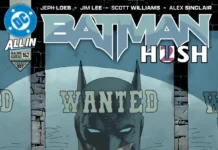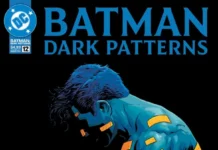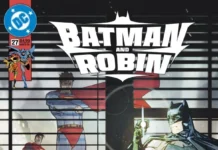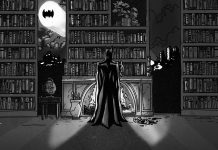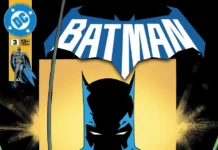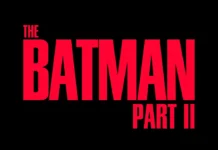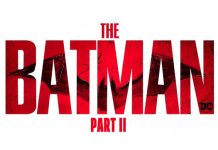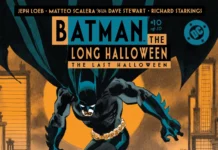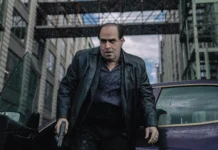 Judgment Day
Judgment Day
Sometimes knowing how a story has to end can feel a little restricting. From a creative perspective, I’m sure it can be limiting, because you’d like to think a creator should be able to take the characters where they naturally want to go. On the other hand, knowing the ending can rein in the narrative, because good stories do follow some of the same rules. And a smart creator can work backwards to show how we got to where we ended up, and show how we had to end up there, illuminating characters and events in the process. Now that we’re at the last issue of this book, we can ask whether the ending feels forced or whether it naturally builds up to what we get at the beginning of the movie. Is it more like Rogue One or Prometheus?
The Riddler: Year One takes Rogue One track. It builds to the natural conclusion that leads to Dano’s performance in the movie. That’s how it came to be in the first place because as you’ll recall, Dano wanted to create a backstory to explore the character. He wanted to establish how Edward Nashton came to be who we see in The Batman, and originally Dano created the narrative for his own benefit as part of his performance. It was when others saw how great his story was that he began turning it into this book. And I’m glad he did, and I think other fans will agree that he really delivers.
I don’t want to give too much away, because even though we know what ultimately happens, there are some surprises along the way for those who have been keeping up. Edward has completed his transformation now and starts to dole out his idea of justice on the good and the bad people we’ve met along the way. So we see some groundwork laid for his victims in the movie, and some creative means of dealing with other corrupt characters. He even takes the time to rescue some of the victims he’s met (he does consider himself a hero after all).
There is one sequence at the beginning that I want to highlight. I’ve written before about the flood at the end of the movie being an allusion to the Biblical flood, judgment, and the washing away of evil. Edward sees it this way too. At the beginning of this issue, he visits Arkham Asylum as part of his preparation, knowing it’s his eventual destination. He even calls it his “Ark” (I love that play on the name) where he and Batman can be safe. We’re reminded that Edward’s mother was sent to the asylum after abandoning him and eventually took her own life there. At least, that’s what’s presented, it’s hard to tell what’s true and what Edward believes. Another interesting note from this section: Edward uses this visit to form a plan for escaping, based on his assumption that Batman would come to his rescue. We know that doesn’t happen, but I can’t help wondering if Edward’s knowing how to escape with an accomplice might come in handy later…
There are some other cool nods in this issue. There’s a callback to a Batman villain and their portrayal in another villain-centric story (you’ll know it when you see it, I don’t want to give it away). Edward’s fascination with Batman is as strong as ever, to the point that he’s a co-leading character in this issue just by Edward imagining them working together. When this book began, Edward was barely keeping his demons contained, he would struggle to stay conscious amid terrifying visions and panic attacks, and he was stuck by himself in his own head. He’s still in his own head, but he’s not alone there anymore, and this I think is a big reason we don’t see those panic attacks and horrible imagery anymore. Now he’s got a friend, even if his “friend” doesn’t know it. Remember this next time you watch the scene in Arkham where Batman rejects him. There’s so much background to Edward’s reaction that’s provided in this book. After reading the whole thing, you feel how deep the betrayal was, at least from Edward’s perspective. Not to mention the joy he felt when he saw Batman outside of the coffee shop at his arrest.
There are some loose ends that I think are tied up in subtle ways, but I’m just not sure if I’m reading them correctly. In earlier issues there was a mystery person who was following Edward and somehow knew his name, where he lived, and what he was up to. I was pretty sure this person was in Edward’s imagination, and I still think that, though I don’t recall if it was “confirmed.” I think this mystery person “turned into” Batman in his imagination, but I’m not sure. That’s the thing with a book like this and a very unreliable narrator, it’s hard to track what actually happened compared to what they’re experiencing. Edward does talk (to himself) about trying to contact Batman and getting no response. This reminds us that the last we saw Edward in the “present” was at the end of issue three when he tried to get Batman’s attention, back in February. Issue four was a flashback, and Issue five was his journal.
But that’s all the more reason I’m excited to read this in a collected edition. One of my nitpicks about the previous issue is that it didn’t really advance the story, it just felt like it took a break to focus on Edward’s mental state. I think that’s a great choice, I just think it will be easier to appreciate when it’s part of the whole book. And I think other events in the previous issues foreshadow what we get here in clever ways. The Animal Rescue front storyline comes to an ending that’s equally amusing and horrifying. Remember the drowning rats from issue four? Edward sure does, and he’s afraid of them anymore. And the turtle Edward kills at the orphanage? Edward’s journey in this whole book is basically trying to hide in his shell and being destroyed anyway with no safe haven. There’s even a really quick scene of a family being attacked in an alley, which is always notable in a Batman book, but especially so given Edward’s feeling betrayed by Thomas Wayne. I think this book will be best appreciated as a whole, and I think it will become a classic.
So, to wrap it all up, this is an excellent book. Dano and Subic have given us a treat that will soon be talked about with other classic Batman books and villain stories. The story leads to a familiar ending but has enough twists and surprises along the way to keep you engaged. The art, something I didn’t love initially, is fantastic once you understand why Subic is making the choices he’s making. The intentional use of realistic and impressionistic imagery is a great way to get into Edward’s perspective. And the character development of Edward Nashton is something that I think will transcend just this book or this portrayal. I think I’ll recall Edward’s childhood from issue four whenever I read or watch Riddler stories from now on. I hope this book becomes something we associate with the character from now on because it elevates him from good to great. – Trey Jackson
GRADE: A+

